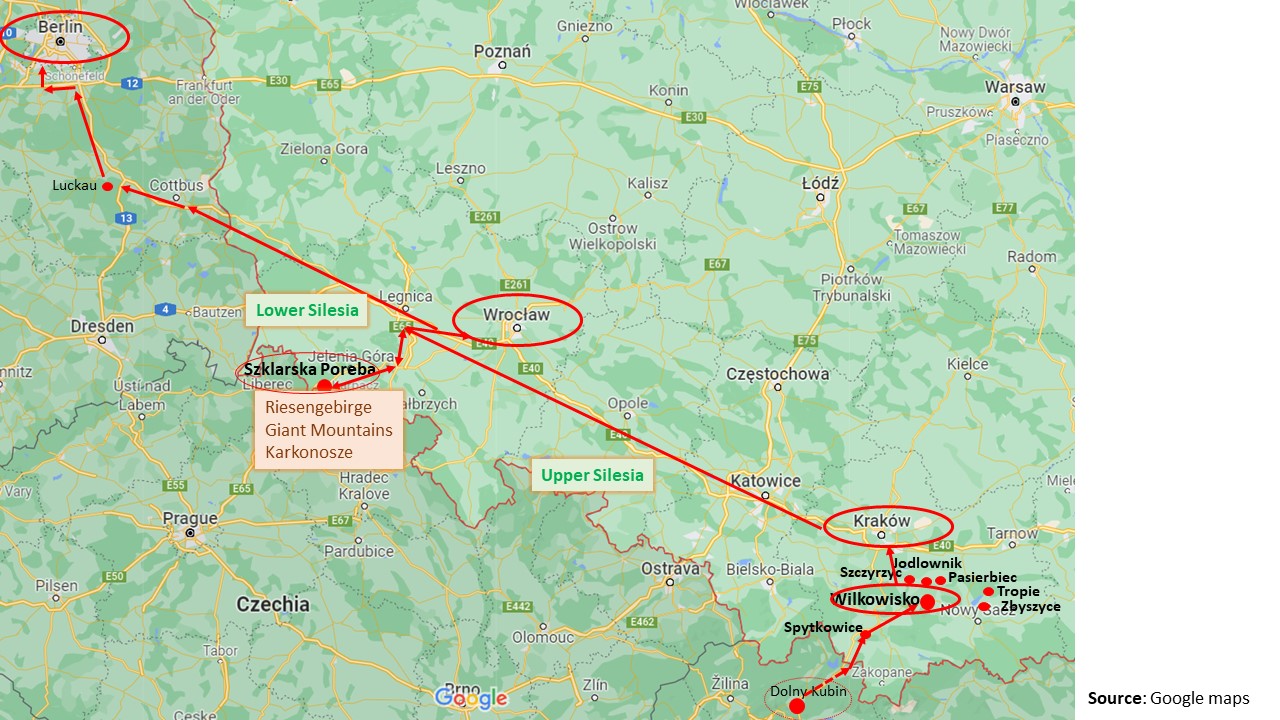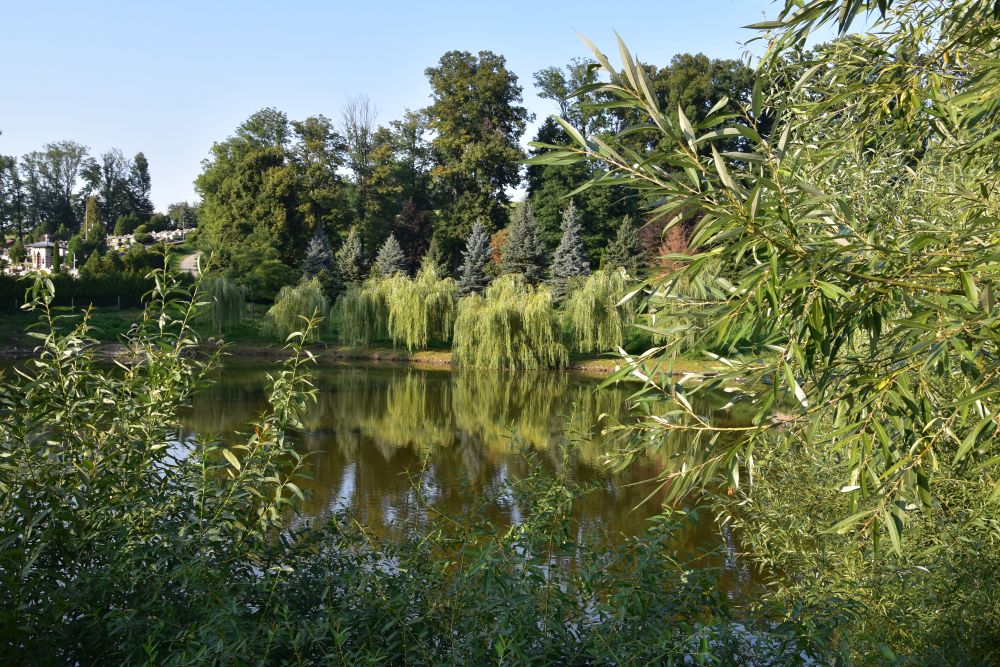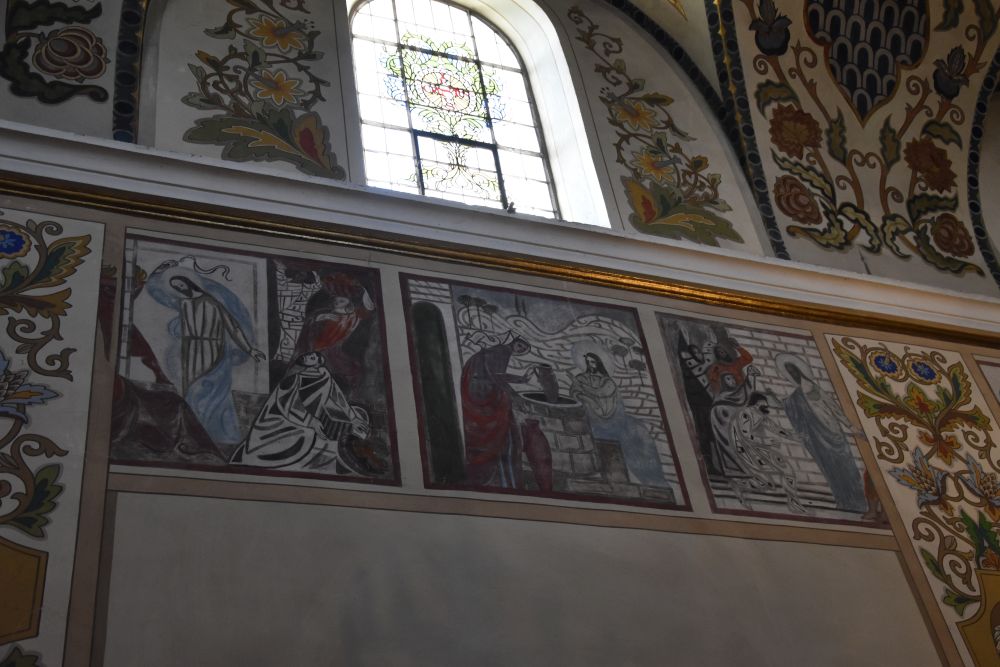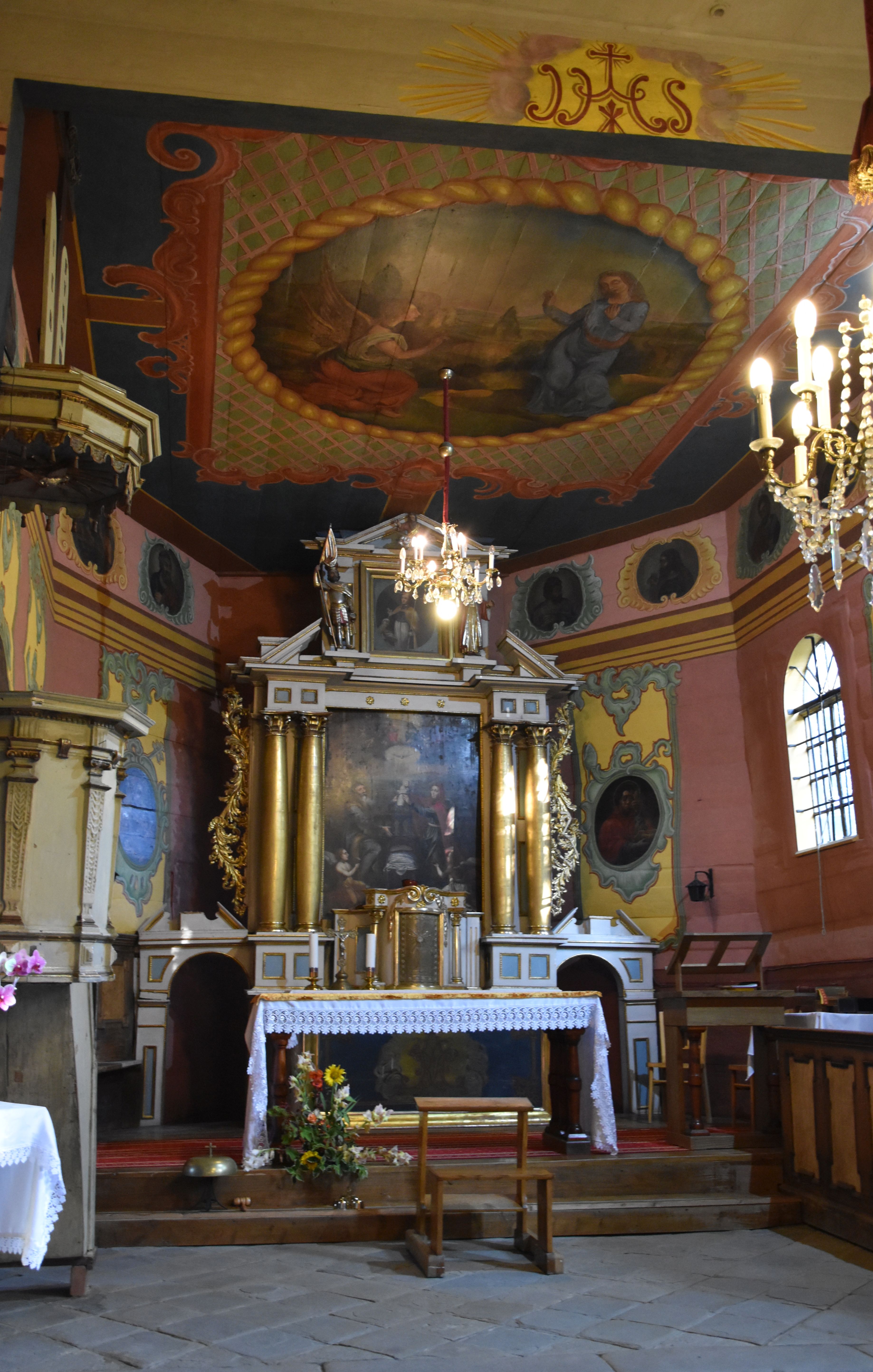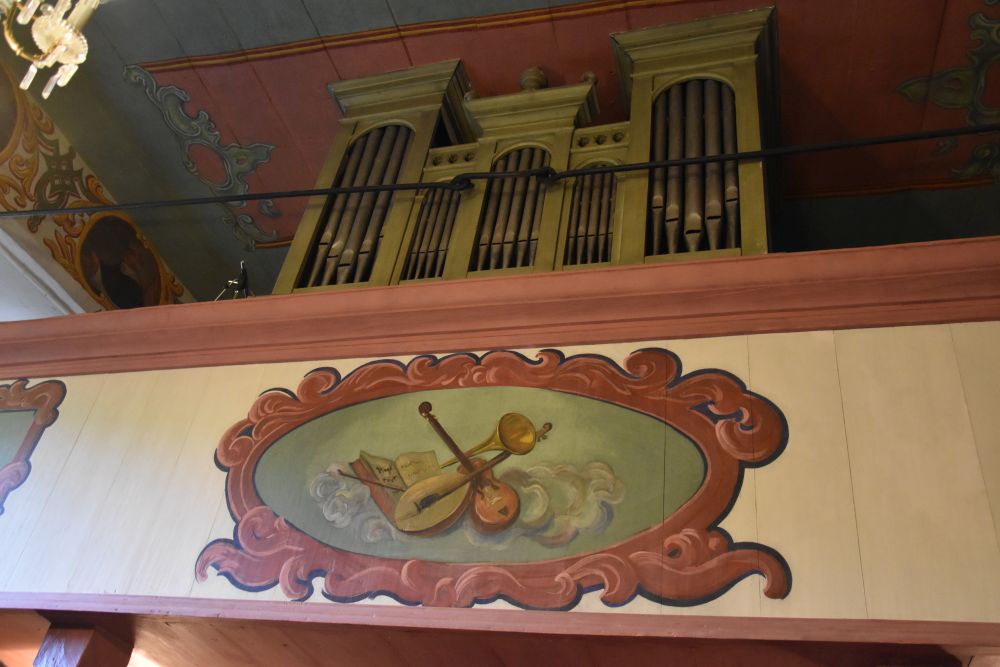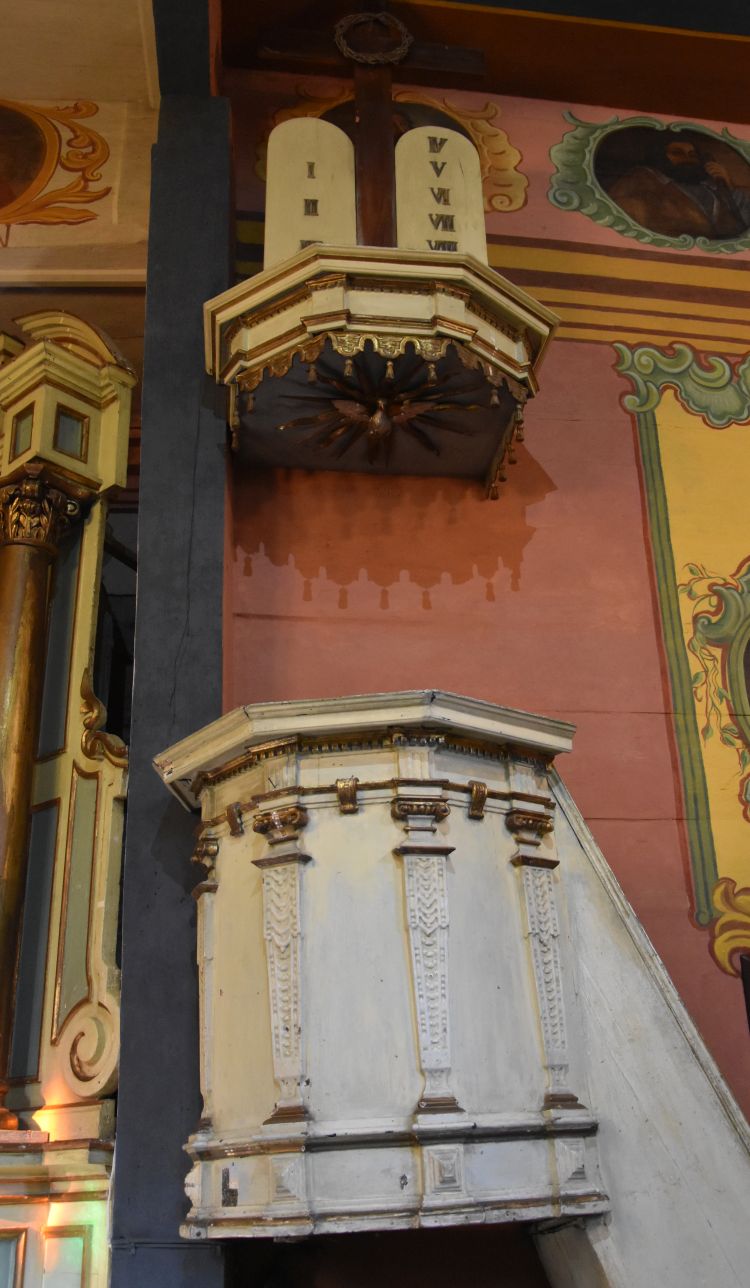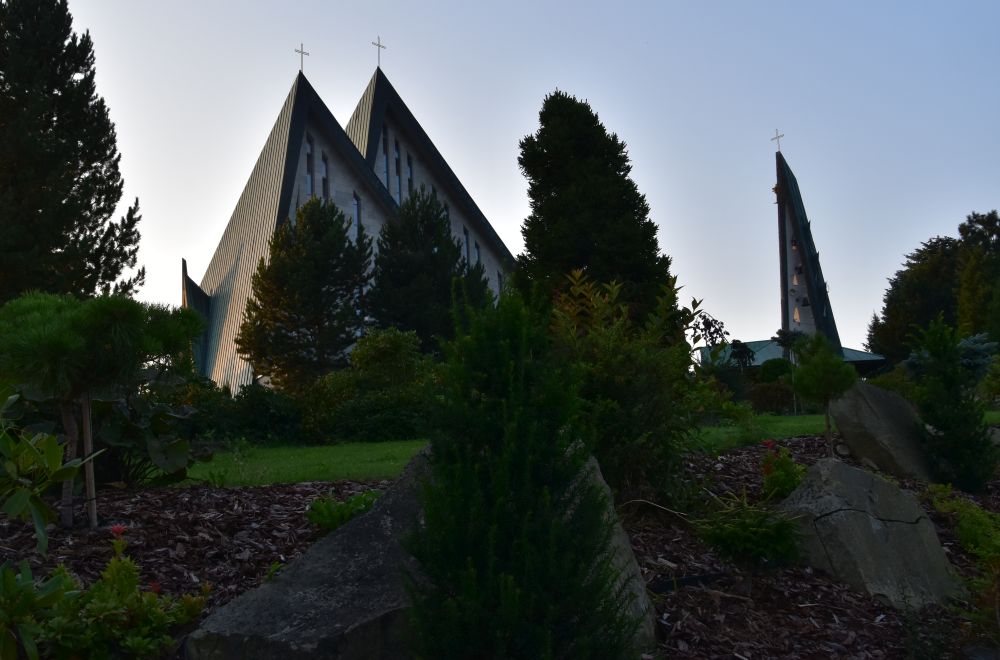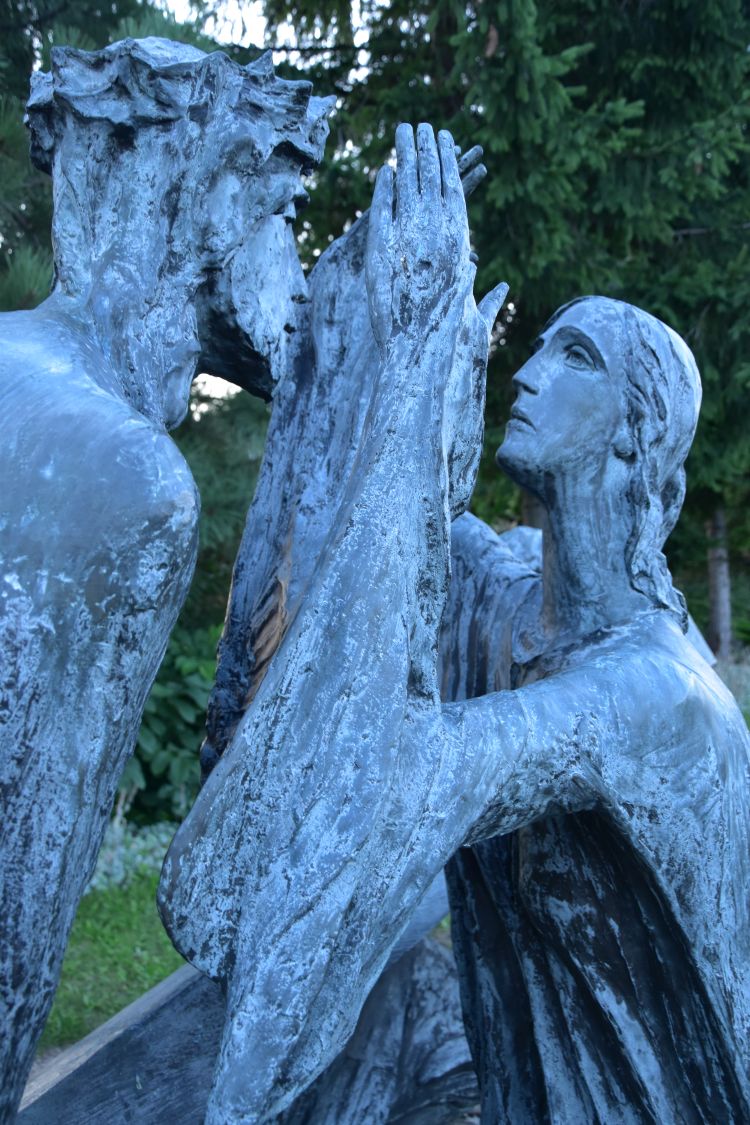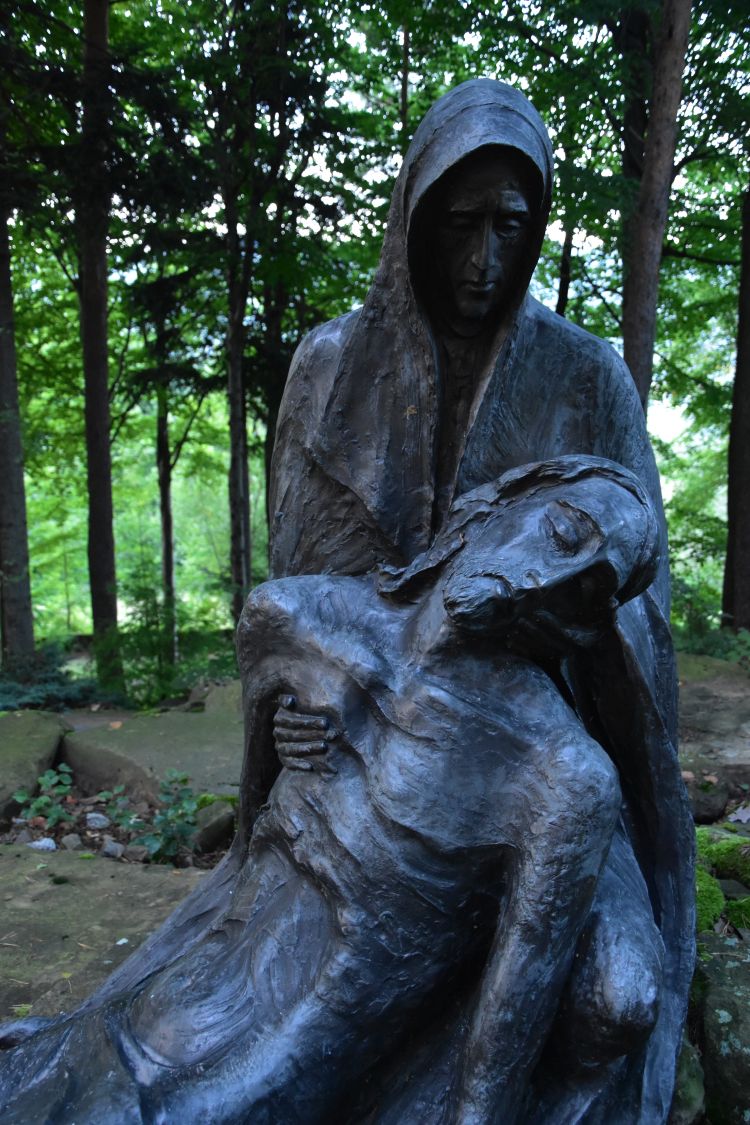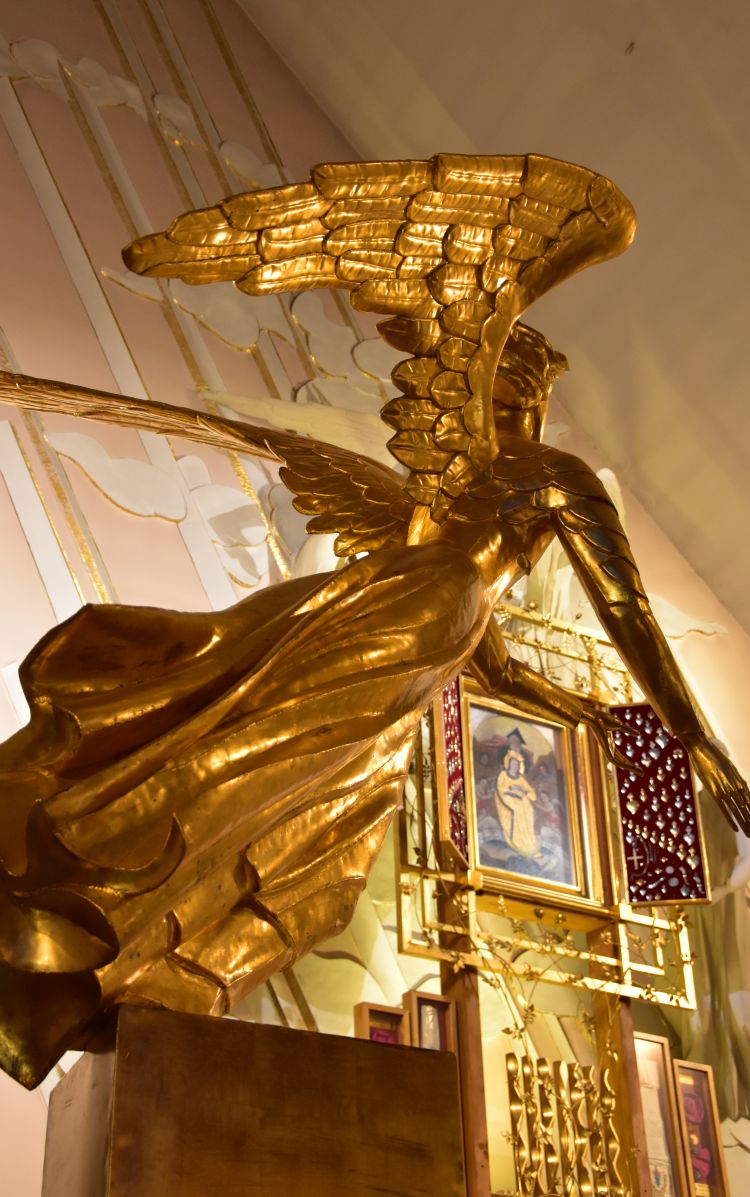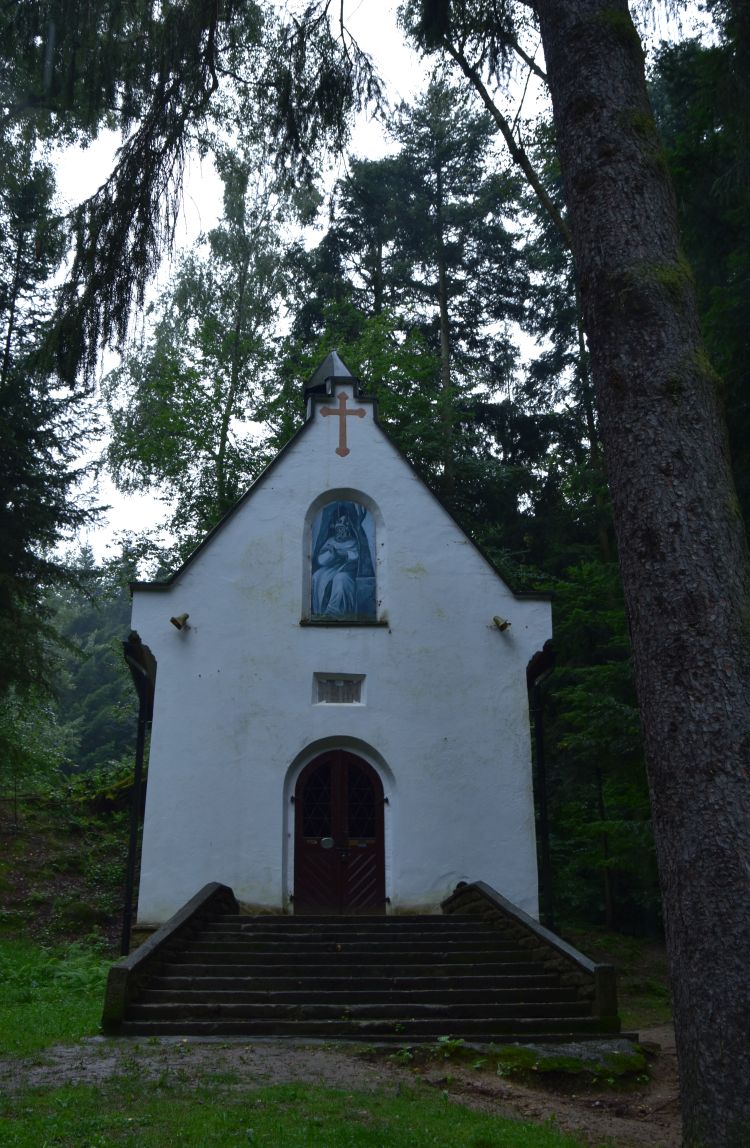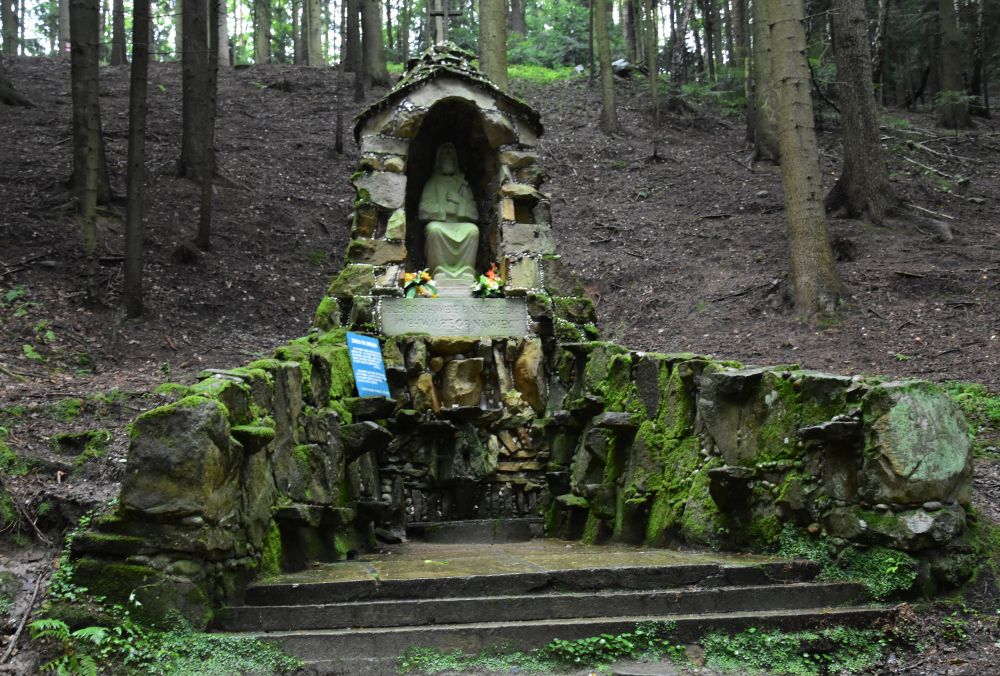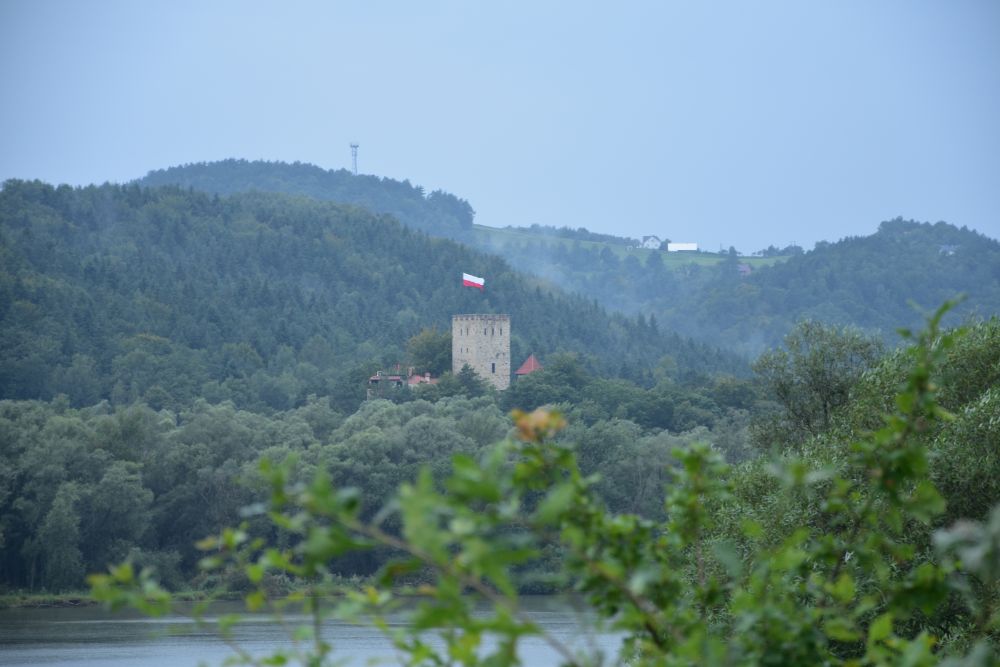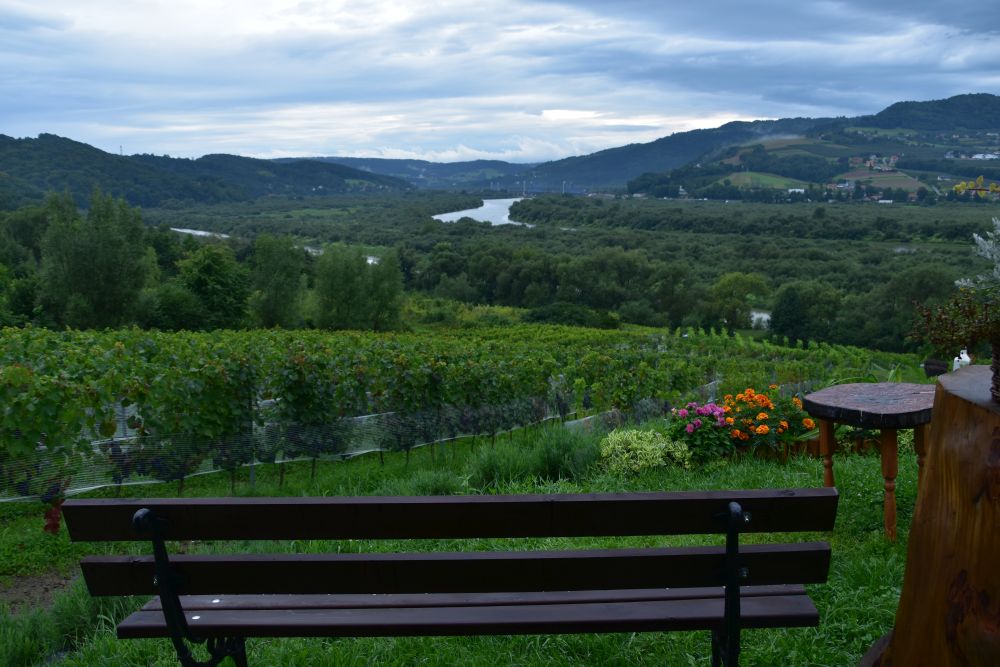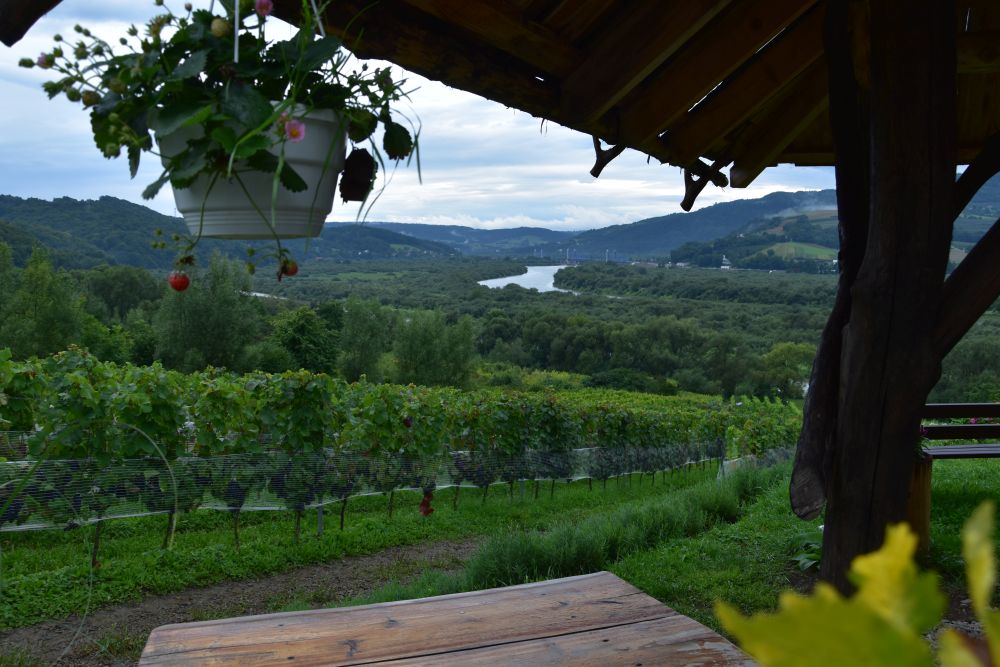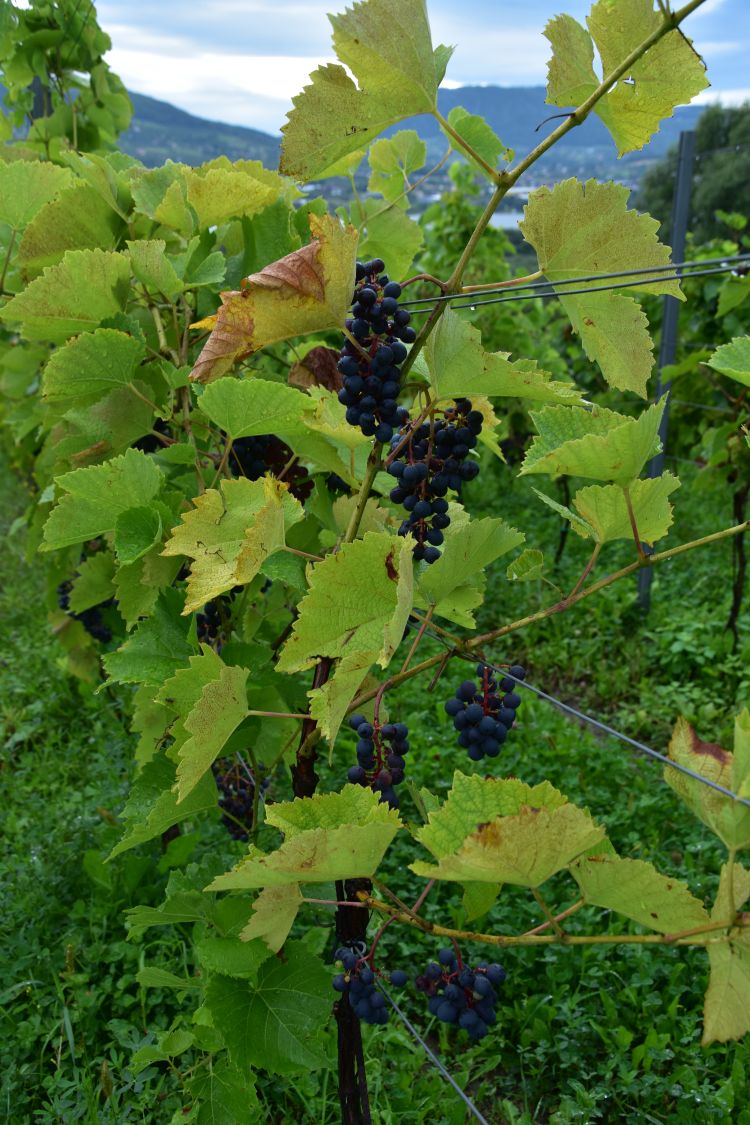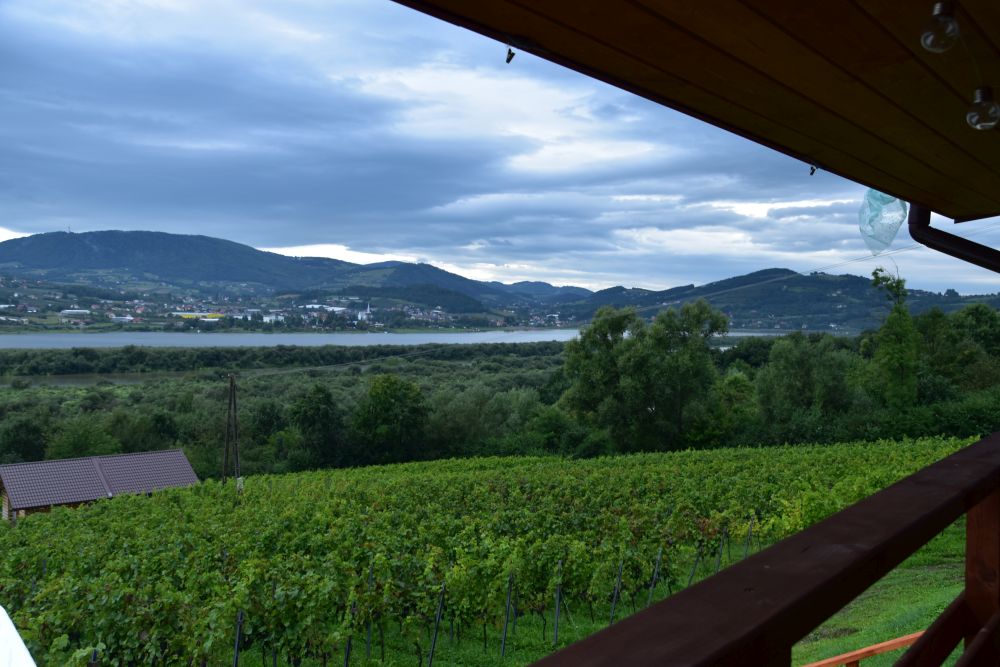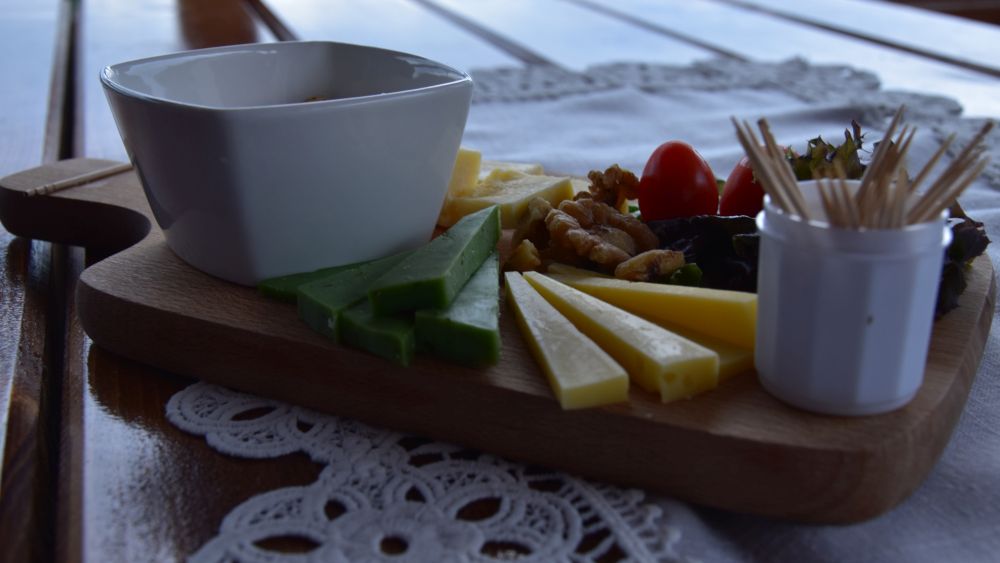End of August 2021, I am on the road, to Berlin via Slovakia and Poland. My route: Munich, in Slovakia, Bratislava – Trnava – Nitra – Žilina – Strečno and Terchová – Dolny Kubin, Podbiel and Tvrdošín, then in Poland: Wilkowisko – Kraków – Szklarska Poręba – Wrocław, and finally Berlin.
Just after having entered Poland from Slovakia, I come across another wooden church: This is the church of the Immaculate Conception at Spytkowice.
It is one of many wooden churches in Southern Poland. It dates from the late 18th century and has been enhanced later. Inside are paintings and some 17th century artefacts, as the panel explains. I find the door closed and continue my way.
This is my plan for travelling through Poland. My final destination is Berlin.
Today I plan to stay at Wilkowisko.
After having travelled alone for four days, I look forward to staying with the family of Radosław. Along with his mother, his father and his brother, they give me a hearty welcome, they accommodate me with love, and they show me the area around their small village: the monastery Szczyrzyc, the wooden church at Jodłówka, the Sanctuary at Pasierbiec, Tropie with the Romanesque church and the hermit’s chapel and spring in the forest, and the winery Gródek (they grow wine in Poland, too).
The monastery Szczyrzyc
When trying to read “Szczyrzyc”, my tongue gets blocked. But then I think of it in Russian: Щижиць. Much easier for me. Now I can remember the name. The Polish way of combining “our” characters to form the Slavic sibilant sounds is logical, but it seems somewhat complicated to me: “szcz” is just “щ” in Cyrillic and “rz” is “ж”.
The monastery of Szczyrzyc is a Cistercian Abbey. It was founded in 1234 and has been active since then, under the Austrians, under the Nazi, under the Soviets, always. The Abbey resisted the Nazis and, in 1945, received a medal for that.
The monastery is economically active. They run a brewery, they have a farm with animals (even some friendly alpacas) and a romantic pond for fish.
The church from the 17th century has been reconstructed in the 19th century.
Behind the abbey there is this hill with a chapel.
Here the belfry guards over the monastery.
A wonderful setting in the hills.
The wooden church at Jodłówka
Our next stop is Jodłówka. There is a Parish named after Narodzenia Najświętszej Maryi Panny (Birth of the Blessed Virgin Mary) with a modern, new church and with the old wooden church. We look at the small wooden church.
In 1585, it was built by the owner of the village. After his death, it was taken over by the Dominicans. Since the 18th century, the Cistercians have taken care of it. It served as the parish church, until the new church was inaugurated.
A Cistercian opens the church for us. The paintings on the ceiling and on the wall are from the 18th century and mostly relate to the Dominican order.
There are also older paintings from the 17th century. The original altar painting is now in the new church.
The joyful medallion below the organ alludes to music.
I like the representation of the Ten Commandments above the pulpit. The pulpit is from the 16th century, built in Renaissance style.
May the Holy Spirit, represented as a pigeon, guide the preacher well.
Later I learn from Wikpedia that this wooden church is on the Wooden Architecture Trail in Lesser Poland (Małopolska) which includes 253 objects on 1500km, some of which are UNESCO World Heritage Sites.
The Sanctuary Matki Bożej Pocieszenia at Pasierbiec
Above Pasierbiec we stop near this beautiful modern church dedicated to Our Lady of Consolation (Matki Bożej Pocieszenia).
Behind the church, there are the Stations of the Cross. I look at the sculptures and ask, who made them, perhaps Bronisław Chromy?
Radosław ‘s mum is surprised: “You know Bronisław Chromy?” She tells me that he has designed the sculptures, but he was no longer able to accomplish his work before his death.
Beautiful, how the mother looks at her son suffering.
This is, how Bronisław Chromy interprets the Pietá.
Inside the church, angels are flying.
I remember Bronisław Chromy’s Christ at the church Arka Pana in Kraków (Nova Huta) that I once used as a Christmas card. Just beautiful.
Bronisław Chromy has also made profane statues like Pies Dżok, the faithful dog; the dog waited at a road junction for his master that had died. The sculpture is near the Wawel at Kraków.
In addition, there are more of his sculptures in Kraków such as the owls in Planty, the fire spitting dragon below Wawel castle or the collection of statues integrated into Park Desjusza.
Tropie with the Romanesque church, with the romantic chapels in the forest and with Zamek Tropsztyn across the lake
Above the Czchów Lake, we visit the church St. Andrew and St. Benedict (kościół parafialny p.w. Świętych Andrzeja Świerada i Benedykta) from the late 11th or early 12th century. The original Romanesque choir walls have been preserved, along with remains of Romanesque paintings inside.
Below the church, benches above the lake invite to an open air service, when it is raining less.
Nearby, we find the Chapel “Hermitage St. Andrzej Świerad” in the rainy and swampy forest. St. Świerad was the Benedictine monk who retreated here in the 10/11th century which was the reason that the St. Andrew and St. Benedict church was built nearby.
Also here, there are benches for an open air service.
Above the chapel, there is a spring (źródło) with an altar showing St. Świerad. It is said that he used to pray here.
Across the lake, we see the Tropsztyn Castle (Zamek Tropsztyn).
The castle (first built from wood) dates from the early 13th century, the tower is from the 14/15th century. The castle changed owners over the centuries. Already in 1608, it was described to be a ruin. After 1993, it was restored and opened to the public. Currently, it seems to be closed (see entry on google maps).
Winery Gródek
To round off our day, we visit the Winnica Gródek, founded in 2014. It is beautifully located in Zbyszyce above the river Dunajec and the Rożnowskie Lake.
The vineyards comprising 7 ha face east and southwest. Some voices in the Internet attribute potential to this young winery.
Yes, there are wineries in Poland. The grapes they grow are more resistant such as Solaris or Regent.
We sit down on the balcony, wrapped up in blankets…
… and taste some of their wines that are offered with a small snack.
I like their Solaris offered and buy a bottle. I will try it with my neighbours, when back in Switzerland, and we enjoyed it. In addition I buy half a bottle of Riesling that I will share with a friend in Berlin. This Riesling, however, has room for improvement. May be, Poland is too far north, even for a Riesling that delivers its best results in Germany and in the Alsace.
Good-bye Wilkowisko
My friend’s parents live in the small village Wilkowisko – a few houses scattered along one road. The name took me a long time to remember. What helped me: “Wilk” means “wolf” in Polish.
I do thank you for these two wonderful days. This corner of Europe offers so much to discover. And, now, back at home, I enjoy the delicious miód (honey) that your neighbours have produced.
My next destination will be Kraków. I look forward to “coming home”, as I have been in Kraków so many times, in pre-Covid times hopping over from Basel by Easyjet with the cheese for Fondue in my suitcase for my friends. This time I will prepare Röschti with cheese (for the vegetarians) or with thin strips of meat in a sauce (for the non vegetarians).
Sources:
- Wikipedia entries in English, French and German for the Abbey at Szczyrzyc.
- Kościół Narodzenia Najświętszej Marii Panny w Jodłowniku (Church of the Birth of the Holy Lady Maria) in Wikipedia
- TROPIE – CHURCH OF ST ANDREW AND ST BENEDICT
- Замок Тропштын (Википедия)
- Where to try Polish Wines in Krakow?
- Mark Baker et alii, “Poland”, Lonely Planet 2012

